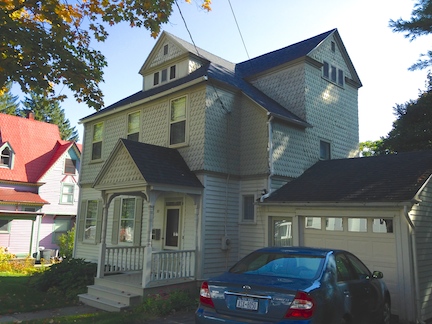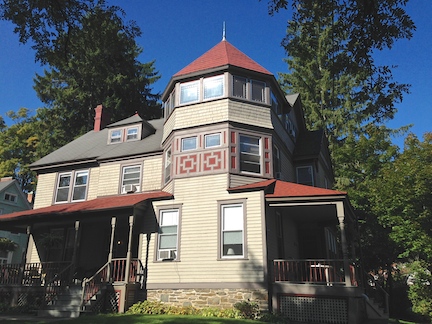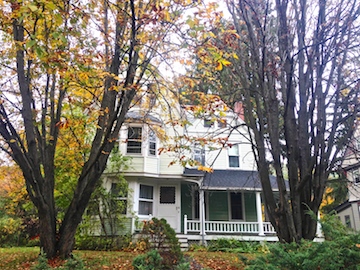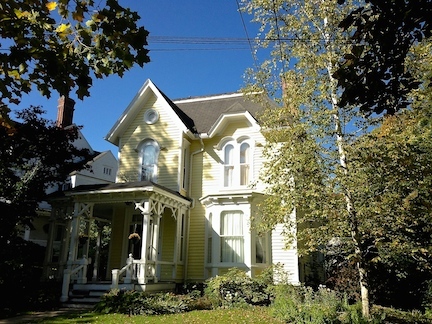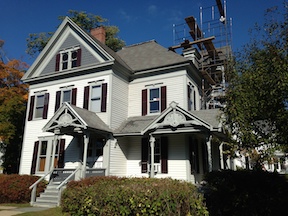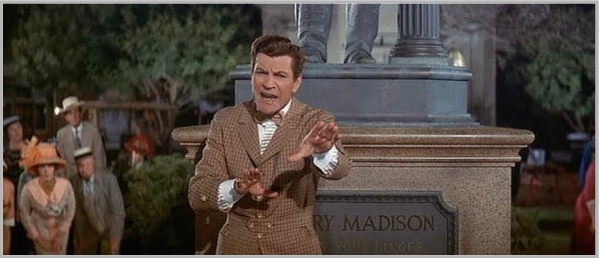 “Mothers of River City!
“Mothers of River City!
Heed the warning before it's too late!
Watch for the telltale signs of corruption!”
“Is there a nicotine stain on his index finger?
A dime novel hidden in the corn crib?”
The inclusion of the Dime Novel as a sign of “Trouble” in The Music Man is a light-hearted take on what was once perceived as a very real threat to the moral fiber of our nation’s youth. Ministers across the land warned that exposure to them was directly linked to adolescent criminality. Reformer Anthony Comstock, founder of the “New York Society for the Suppression of Vice” claimed dime novels had a “demoralizing influence upon the young mind” by arousing sexual thoughts. The Tribune blamed them for many types of juvenile delinquency (including guns in schools), informing its readership their focus taught that "violence and trickery and immorality are manly, and that the character to be admired is the bully and ruffian who knocks everybody about, and cuts throats right and left.” 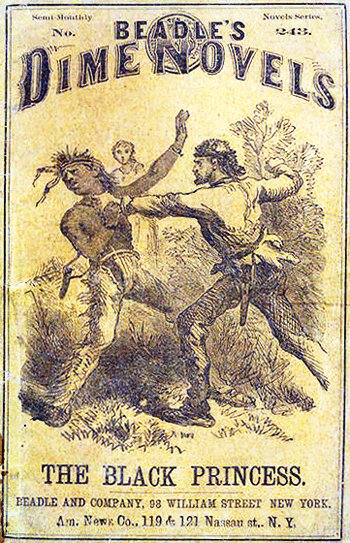 Yes, many believed the Dime Novel was a scourge to society.
Yes, many believed the Dime Novel was a scourge to society.
It might be startling then, when admiring the oh-so respectable looking late nineteenth century homes gracing Pine Boulevard and Nelson Avenue in Cooperstown, to learn that many owe their very existence, at least in part, to this “disreputable’ early form of pulp fiction.
And how are they connected?
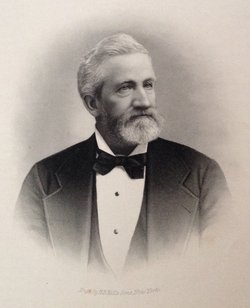 Through Erastus Flavel Beadle.
Through Erastus Flavel Beadle.
Born in nearby Pierstown in 1821, Erastus apprenticed with the Cooperstown publishing firm of H & E Phinney in 1838. The industrious young man later moved to Buffalo where he worked as a stereotype. Joined there by his brother Irwin, the ambitious duo had set up their own stereotype business by 1850, moving it to New York City in 1858.
The firm (later named Beadle & Adams) developed a series of booklets on a wide variety of subjects, from cooking to baseball. Noting the popularity of serialized stories in newspapers, they experimented with adapting their booklets as a vehicle for serialized works of fiction. The first novel they printed, advertised as “a dollar book for a dime”, was a runaway hit, selling more than 65,000 copies in the first few months.
The fast-paced sagas, often featuring Western adventurers, backwoodsmen, and hunters, especially appealed to young working class men and women. While the Civil War initially slowed sales, Union troops soon proved a voracious readership. Looking for a new market in the 1870s, they believed a nickel price might make the novels more accessible to children. The firm developed a line of “half dime” novels featuring stories written specifically for boys, and soon America’s youth was hooked!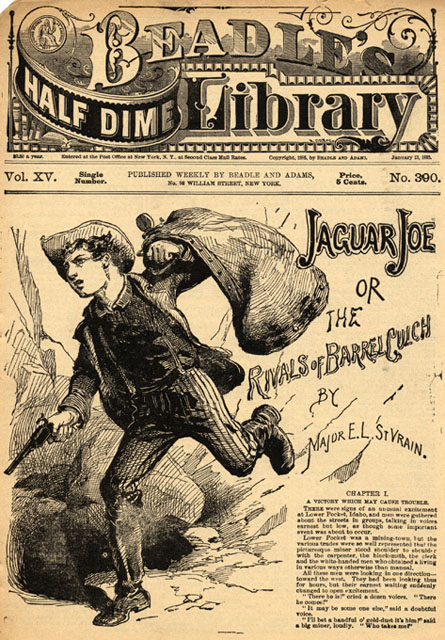
Despite their detractors, Dime Novels primarily featured morally upright storylines. Bad guys were captured and punished in the end, while good guys were brave, chivalrous, and patriotic, and the attractive damsels in distress were chaste and pure. Critics seem to have been motivated more by an inherent distrust of anything embraced by youth rather than its actual content (a pattern of looking at pop culture that ironically repeats itself to this very day!).
While there other publishing companies were doing the same thing, Beadle and Adams was by far the most successful. His brother Irwin actually came up with the concept, but Erastus a shrewd businessman and marketing genius, ended up getting most of the credit for their success (and the profits), making him a wealthy man. 
Luckily for Cooperstown, his attention turned towards the village where he got his start in business. The Beadle family began summering at Marcy Hall, a handsome stone residence located just south of the village.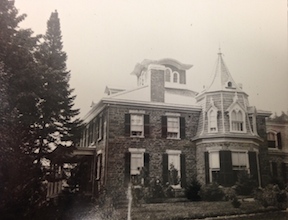
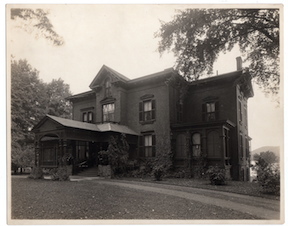 Courtesy of the NYSHA Library, Ward Collection, 54 Lake (Glimmerview) Not content to sit back and enjoy the view of the lake from his summer home, the restless Erastus began buying buildings around the village. Some he resold, others he rented out, but in nearly every instance, he made significant improvements to them. In addition to local landmarks such as the the former County Courthouse
Courtesy of the NYSHA Library, Ward Collection, 54 Lake (Glimmerview) Not content to sit back and enjoy the view of the lake from his summer home, the restless Erastus began buying buildings around the village. Some he resold, others he rented out, but in nearly every instance, he made significant improvements to them. In addition to local landmarks such as the the former County Courthouse (later sold to Alfred Corning Clark), he also purchased a row of workman’s cottages on Pioneer Street, renovating them to create affordable housing for those of modest means.
(later sold to Alfred Corning Clark), he also purchased a row of workman’s cottages on Pioneer Street, renovating them to create affordable housing for those of modest means.
Most significantly, in April of 1882 he purchased a large parcel of land on Pine Street (then the western outskirts of the village), acquiring an additional 7 acres to the south and west soon thereafter. By September he had laid a wide “suburban” avenue through his property, connecting Main and Lake Streets. Naming his new thoroughfare after Justice Samuel Nelson, one of Cooperstown’s most illustrious residents, Erastus envisioned a fashionable middle class neighborhood rising up on the large building lots he had begun to lay out on his land. To encourage development and perhaps “set the tone’ of the neighborhood, Beadle also planned on building what we now refer to as “Spec Houses” on some of the lots. In 1883 he sold his first two lots to local residents, who had new homes up on them by the next year (still standing today at 4 and 6 Pine Boulevard). After that, things really began to roll. Between 1885 and 1886 there are records of at least seven more building lots sold by Beadle. In 1886 he also sold two new residences he had constructed on Nelson Avenue, including Cherry Hall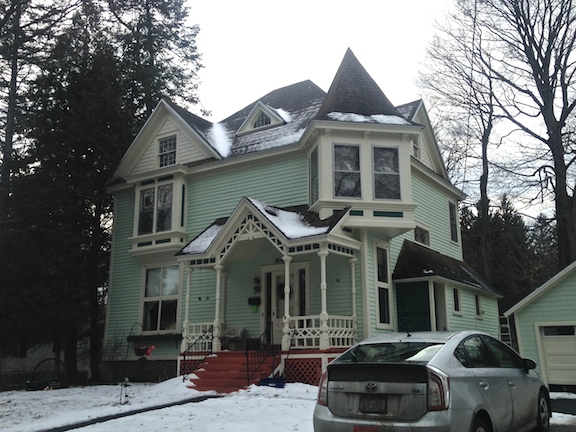

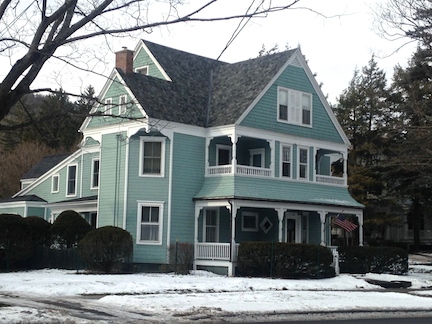
Erastus’s efforts garnered him much attention. In May of 1887, the Freeman’s Journal dubbed him “Cooperstown’s energetic property improver”. It was a quite a feat considering that during the same period Erastus not only had his publishing business in New York City to run, he was plagued by health issues and several family tragedies. During the summer of 1881 his son in-law passed away at Marcy Hall. Severe asthma forced Erastus to spend part of each winter in Colorado (the silver lining may have been his widowed daughter’s subsequent marriage to Denver Banker E L Raymond in 1886). In December of 1885 the papers somberly reported that the Beadles had brought their son Irwin, gravely ill with typhoid, up to Cooperstown to spend his last days. Happily, Irwin’s health improved and he eventually recovered.
1889 began like any other year for Erastus, buying a house in January (built on a Pine Street lot he had sold a few years earlier) with the intention of remodeling it when a severe asthma attack sent him to Colorado later that month. Although his wife’s health had been of concern for some time, her unexpected death on May 17th dealt Erastus a major blow. Devastated, he sold his business interests in New York and decided to retire to Cooperstown fulltime. Though grieving and forced spend a good deal of that summer at the seashore for his own health, Erastus’s inherent restlessness wouldn’t allow him remain inactive for long. On October 11th, the Freemans Journal noted that he was eager to begin work on a newly acquired building on Main Street (today housing the Mohican Club) and the renovations of the cottage he purchased in January were nearly complete, adding that “few men have done more in the last half century to improve the village” for good measure. In November he donated a plot of land on Nelson Avenue to be used as the future site of The Thanksgiving Hospital, before leaving for Colorado for the winter.
His return in February of 1890 marked a new period of intense activity. He initially focused on improvements to some houses he had recently acquired, including the Nichols mansion on Fair St.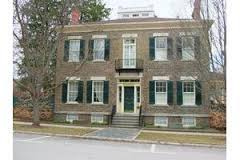 He discovered a new hobby, installing an elaborate ‘pheasantry’ on the grounds of Glimmerview and filling it over the next several years with all sorts of exotic fowl. In November ground was broken for a new cottage, and by the end of 1891 Erastus had constructed three new homes on Pine Street and Nelson Avenues. Although it might be hard to tell by looking at them today under later cosmetic alterations and additions, the houses Erastus built had a distinct character.
He discovered a new hobby, installing an elaborate ‘pheasantry’ on the grounds of Glimmerview and filling it over the next several years with all sorts of exotic fowl. In November ground was broken for a new cottage, and by the end of 1891 Erastus had constructed three new homes on Pine Street and Nelson Avenues. Although it might be hard to tell by looking at them today under later cosmetic alterations and additions, the houses Erastus built had a distinct character.
They usually featured large third floor dormers or towers, often situated to allow a view of the lake through their windows. Although they employ some of the standard decorative elements and surface treatments inherent to the stick and shingle styles then in vogue, he avoided the excessive and ostentatious ornamentation often found on Victorian homes of that era. Looking at the ealry views below of 2 Pine Boulevard, Overlook Cottage and 33 Nelson Avenue, one could venutre to say that Beadle's pared-down taste could almost be described as minimalist for that time! 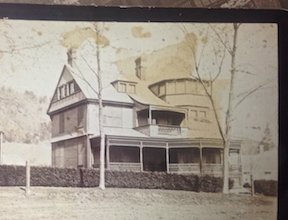
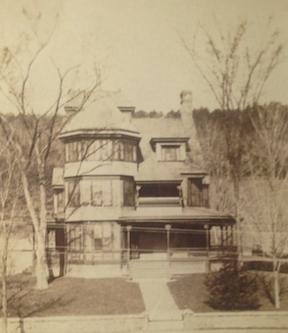 Courtesy of the NYSHA Library, Ward Collection, 8 Pine
Courtesy of the NYSHA Library, Ward Collection, 8 Pine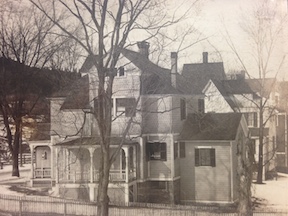
Erastus F Beadle died in December of 1894 at the age of 73. Papers near and far lauded his innovations to the publishing industry, the fortune he amassed, his philanthropy and civic-mindedness. Nowhere were his achievements more celebrated than in Cooperstown where he had generously supported many of the village’s institutions and owned no less than eight dwellings at the time of his death. The Freemans Journal noted that not only did he make new buildings, but was constantly buying others to make more beautiful. There was scarcely a street in the village that he hadn’t positively impacted in some way. One of them, Pine Street, was officially renamed Beadle Avenue in his honor.
For a name made famous by the ephemeral nature of pop culture, collective memory can be short and renown can be fleeting. Dime Novel readership was already in decline by the time Beadle sold his interest in his firm, inevitably replaced by successive waves of new cheap entertainment including cartoons, radio, movies, and television. Several decades after Beadles death, dime novels were remembered nostalgically as wholesome and harmless entertainment. Erastus’s reputedly large fortune turned out to be not so large, consisting primarily of his Cooperstown real estate, which his heirs gradually sold off. The year before he passed away, the Thanksgiving Hospital had to regretfully give back the land he donated to them to build on as no one could ever imagine sewer lines extending all the way out to Nelson Avenue. By the time Glimmerview was razed in the 1940s, it was more associated with the Zabriskie family's, who had owned it for the half-century after Beadle (click here to see a youtube video compilation taken during their time there). Within two years of his death, petitions were circulated to change Beadle Avenue back to Pine Street (later Boulevard), and eventually the town agreed. A century later, the name E F Beadle is often not immediately recognized, even in the village where its shadow once loomed so large. Fortunately, dozens of gracious homes along upper Main Street, Nelson Avenue and Pine Boulevard stand as a solid, permanent tribute to E F Beadle’ s vision and foresight.

